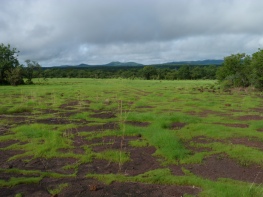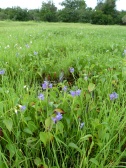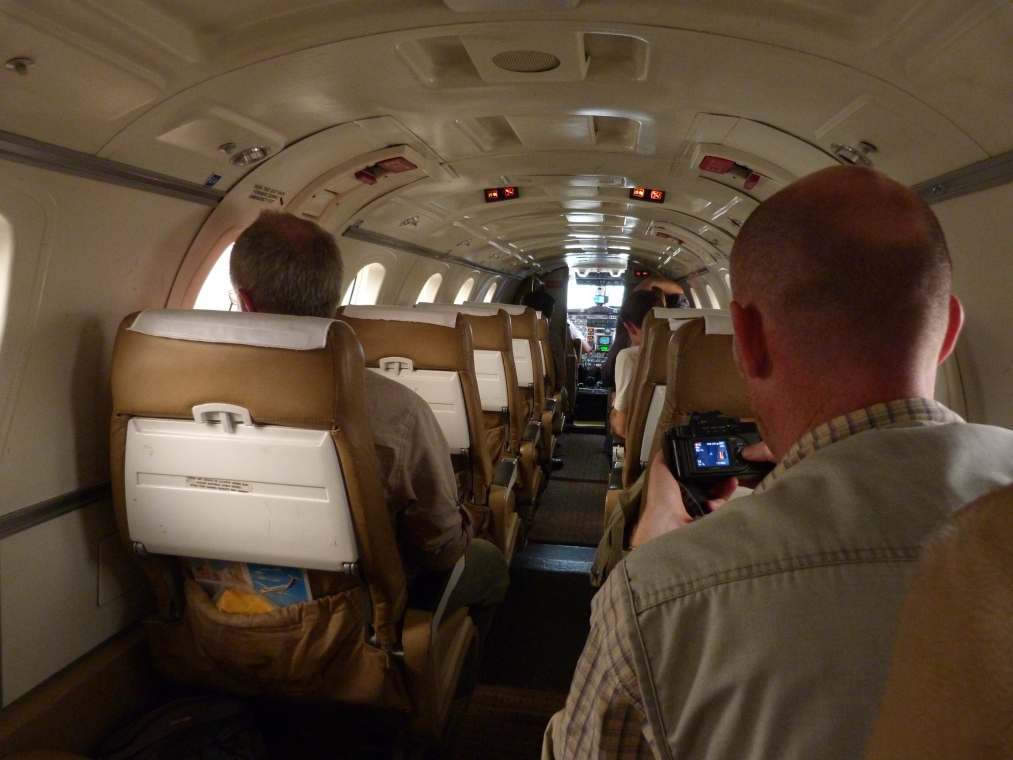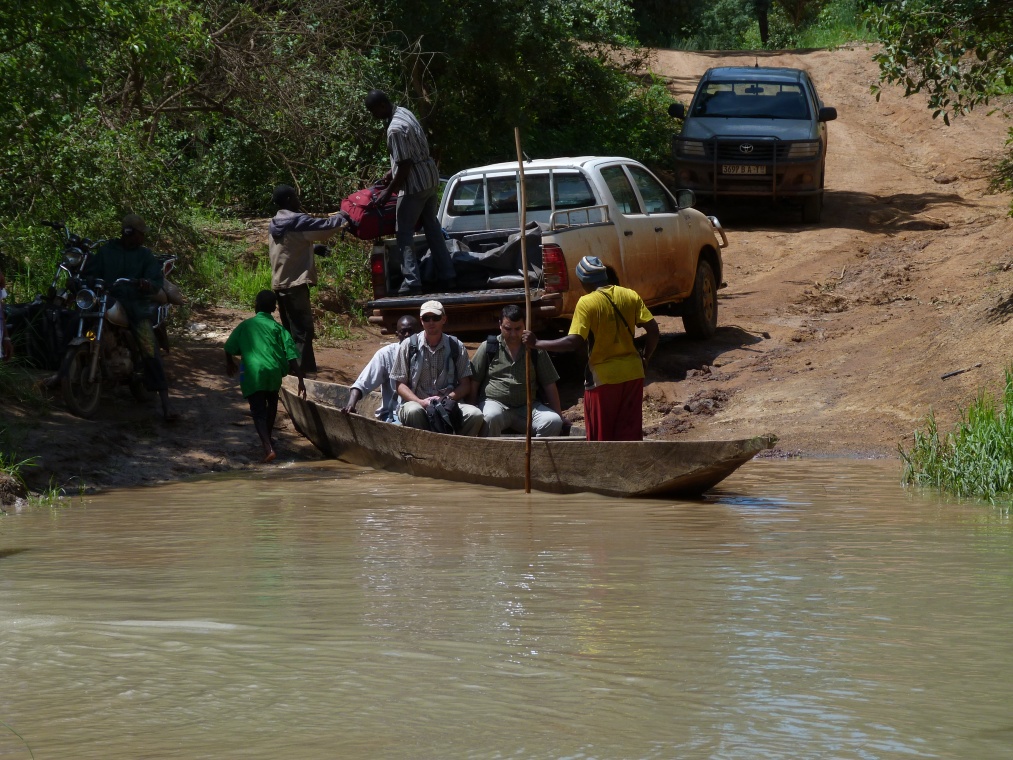Trip to western Mali – Day 3
Today was reserved for driving through the entire study area and getting a feel for the different habitats represented and seeing where the various infrastructure are planned. We started in the south, arriving at a large grassy plain surrounded by closed woodland and thickets. The change in scenery was quite dramatic and gave us an indication of how heterogenous the area is.  The reason for the lack of trees and shrubs is because the laterite is almost unweathered and presents as sheetrock in many places, giving no place for trees to send down roots. This rock layer just below the surface also results in temporary flooding during the wet season and extreme drought during the dry season, making it a hostile environment foAs to be expected, the birds present on the open plains were quite different to the surrounding woodlands. These included Sun Lark, Wattled Lapwing, Forbes’ Plover, small groups of Red-throated Bee-eaters, and mixed flocks of Red-throated and Pied-winged Swallows. A small troop of attractive Patas Monkeys ran off into the woodlands at our arrival. One of the highlights in this area was a small temporary pan that was covered with a mass of aquatic plants, including the sky-blue Monochoria brevipetiolata, an unidentified Dopatrium species and the clover-leaf fern Marsilea cf. polycarpa.
The reason for the lack of trees and shrubs is because the laterite is almost unweathered and presents as sheetrock in many places, giving no place for trees to send down roots. This rock layer just below the surface also results in temporary flooding during the wet season and extreme drought during the dry season, making it a hostile environment foAs to be expected, the birds present on the open plains were quite different to the surrounding woodlands. These included Sun Lark, Wattled Lapwing, Forbes’ Plover, small groups of Red-throated Bee-eaters, and mixed flocks of Red-throated and Pied-winged Swallows. A small troop of attractive Patas Monkeys ran off into the woodlands at our arrival. One of the highlights in this area was a small temporary pan that was covered with a mass of aquatic plants, including the sky-blue Monochoria brevipetiolata, an unidentified Dopatrium species and the clover-leaf fern Marsilea cf. polycarpa.  A short walk into the surrounding woodlands produced a birding highlight in the form of a pair of Adamawa Turtle Doves that perched in full view for a few minutes. This very localised species was unknown from Mali until recently, and I was really hoping to find it! We then continued to a track that followed the Faleme River to the eastern boundary of the tenement area, where I encountered my first Khaya senegalensis trees, and other typical riparian forest species such as Uvaria chamae and Spondias mombin. We then drove through the centre of the tenement area, across laterite plains that had scattered Impala Lilies, to a ridge along the eastern boundary from where we could look down onto a large portion of the survey area.
A short walk into the surrounding woodlands produced a birding highlight in the form of a pair of Adamawa Turtle Doves that perched in full view for a few minutes. This very localised species was unknown from Mali until recently, and I was really hoping to find it! We then continued to a track that followed the Faleme River to the eastern boundary of the tenement area, where I encountered my first Khaya senegalensis trees, and other typical riparian forest species such as Uvaria chamae and Spondias mombin. We then drove through the centre of the tenement area, across laterite plains that had scattered Impala Lilies, to a ridge along the eastern boundary from where we could look down onto a large portion of the survey area.
Trip to western Mali – Days 1-2
Duncan McKenzie and I met up with Fanie Coetzee and the rest of the Epoch team at O.R. Tambo International Airport on evening of Sunday 12 August 2012. Our flight to Dakar took approximately 9 hours, but included a time zone shift backwards. So we arrived in Dakar at the awkward time of 00h45! Fortunately the Hotel Onomor is 5 minutes from the airport, and it was not long before we were checked into our rooms and trying to get some sleep (especially those of us who do not sleep in the unnatural upright position of an airplane seat!).
After an early breakfast at the hotel we checked out and were shuttled across to the airport for our charter flight. This departed on time and we enjoyed a pleasant 2-hour journey across to eastern Senegal.  We landed at the small strip outside of Kedougou, where we were met by our driver and Papillon representative. However, the end of the journey was still a long way off and we began a four hour drive through eastern Senegal to the Mali border. The border crossing was very short of formalities and did not even involve stamping of passports on the Mali side (a BIT disconcerting). We then drove to the dirty small town of Kenieba where we transferred from the minibus to two four-wheel drive Toyotas. This was the start of the journey by dirt road south to the exploration camp at Fedougou. About halfway to Fedougou we encountered an impassable river and were ferried across in dugout canoes to another set orf vehicles waiting for us on the other side! What a mission!
We landed at the small strip outside of Kedougou, where we were met by our driver and Papillon representative. However, the end of the journey was still a long way off and we began a four hour drive through eastern Senegal to the Mali border. The border crossing was very short of formalities and did not even involve stamping of passports on the Mali side (a BIT disconcerting). We then drove to the dirty small town of Kenieba where we transferred from the minibus to two four-wheel drive Toyotas. This was the start of the journey by dirt road south to the exploration camp at Fedougou. About halfway to Fedougou we encountered an impassable river and were ferried across in dugout canoes to another set orf vehicles waiting for us on the other side! What a mission!  The potentially eventful crossing was without incident and we proceded south to camp, arriving in the late afternoon. The camp is situated in tall riparian woodland dominated by Spondias mombin and Pterocarpus erinaceus trees, with constant bird activity through the day. Some good birds seen in camp while we transferred our luggage and settled in were African Blue Flycatcher, Long-tailed Starling and a small flock of Senegal Parrots. Duncan, Fanie, Alan and myself headed out on a short walk through the riparian vegetation close to camp in the late afternoon. Bird activity was surprisingly high, particularly small flocks of seed-eaters. Some of the highlights included Red-cheeked Cordonbleu, Lavender Waxbill, a striking male Black-bellied Firefinch, Black-capped Babblers, the brightly-coloured Yellow-crowned Gonolek, noisy Broad-billed Rollers and a delicate African Pygmy Kingfisher. Returned to camp just before dark, feeling very satisfied with my first taste of Mali birding.
The potentially eventful crossing was without incident and we proceded south to camp, arriving in the late afternoon. The camp is situated in tall riparian woodland dominated by Spondias mombin and Pterocarpus erinaceus trees, with constant bird activity through the day. Some good birds seen in camp while we transferred our luggage and settled in were African Blue Flycatcher, Long-tailed Starling and a small flock of Senegal Parrots. Duncan, Fanie, Alan and myself headed out on a short walk through the riparian vegetation close to camp in the late afternoon. Bird activity was surprisingly high, particularly small flocks of seed-eaters. Some of the highlights included Red-cheeked Cordonbleu, Lavender Waxbill, a striking male Black-bellied Firefinch, Black-capped Babblers, the brightly-coloured Yellow-crowned Gonolek, noisy Broad-billed Rollers and a delicate African Pygmy Kingfisher. Returned to camp just before dark, feeling very satisfied with my first taste of Mali birding.